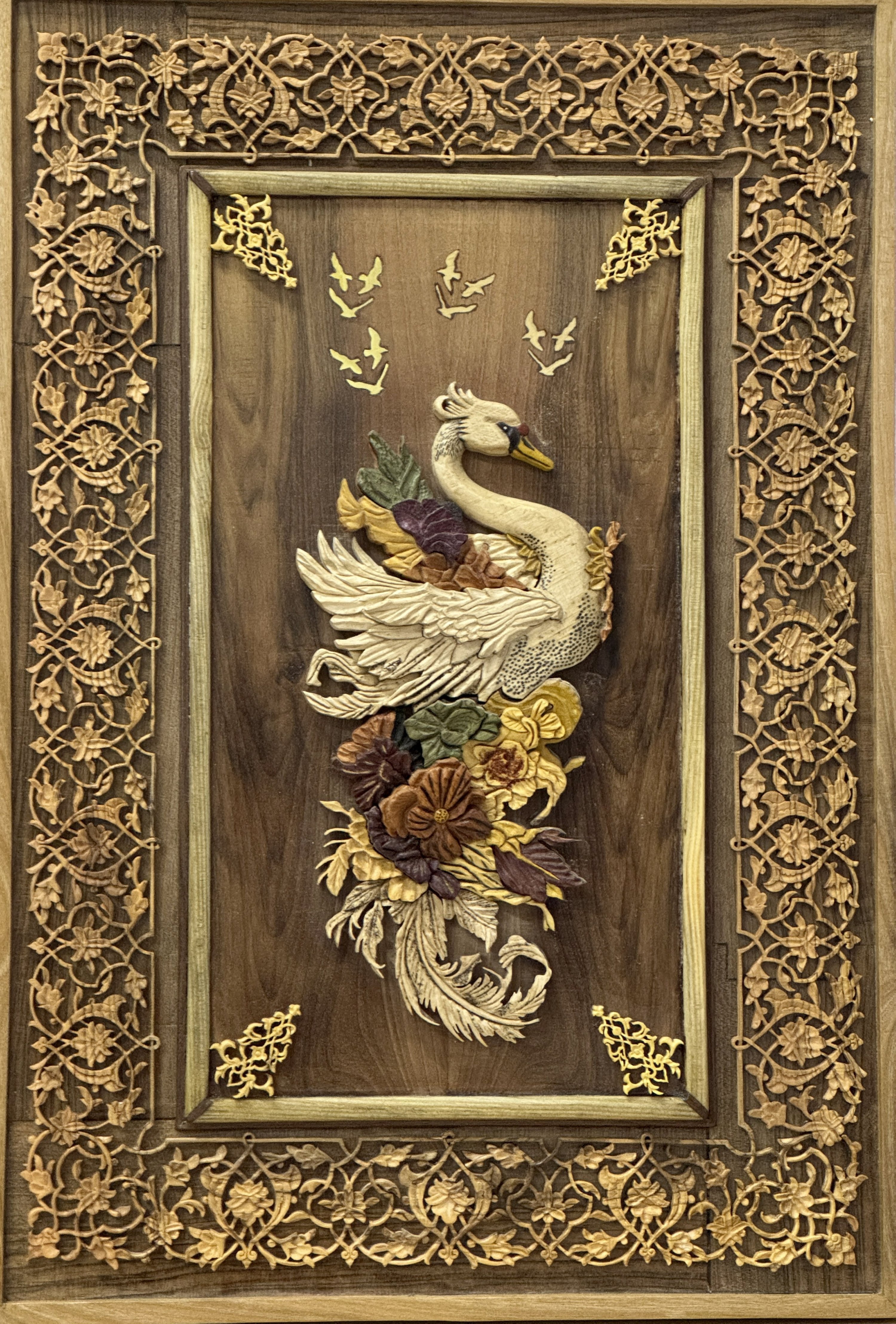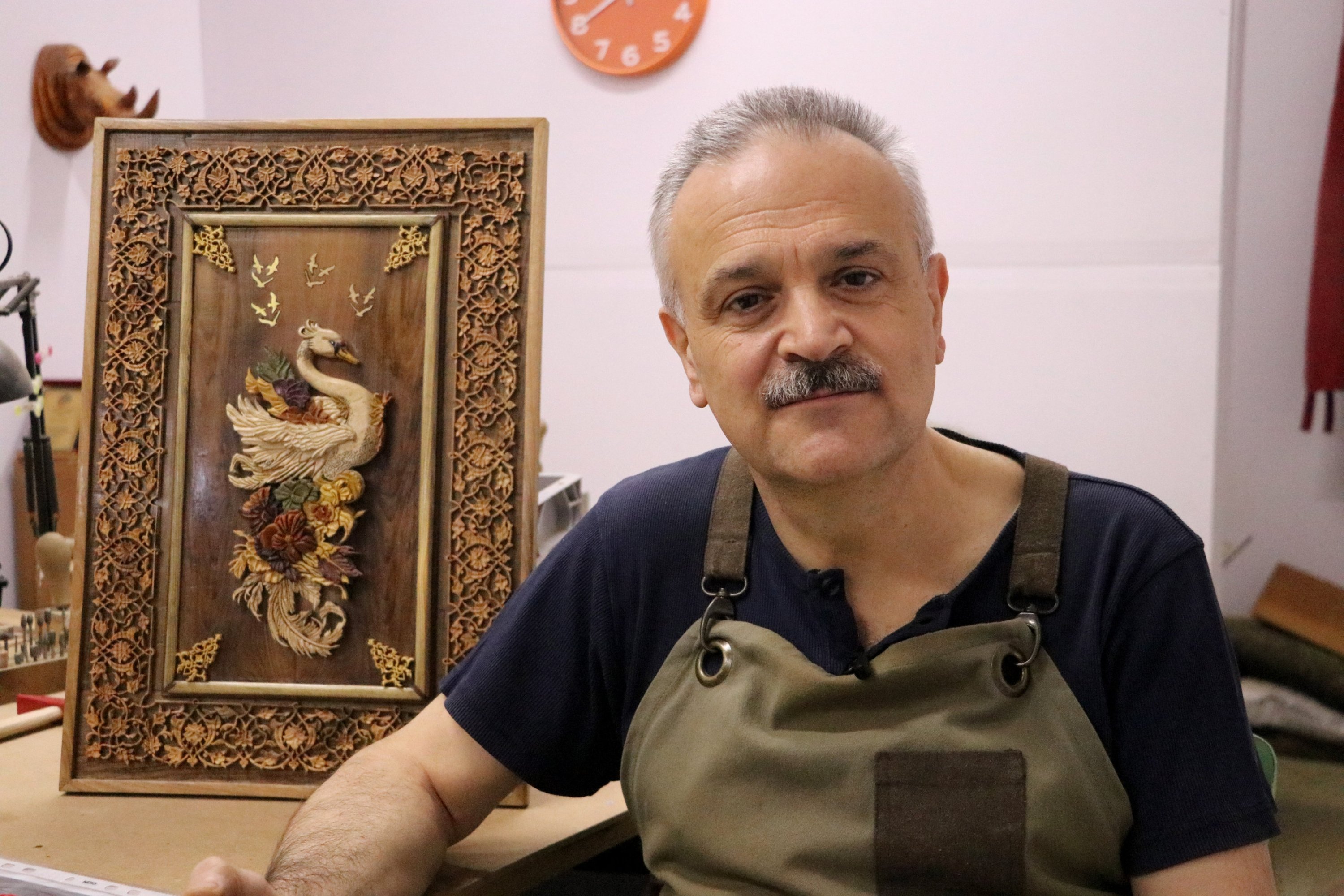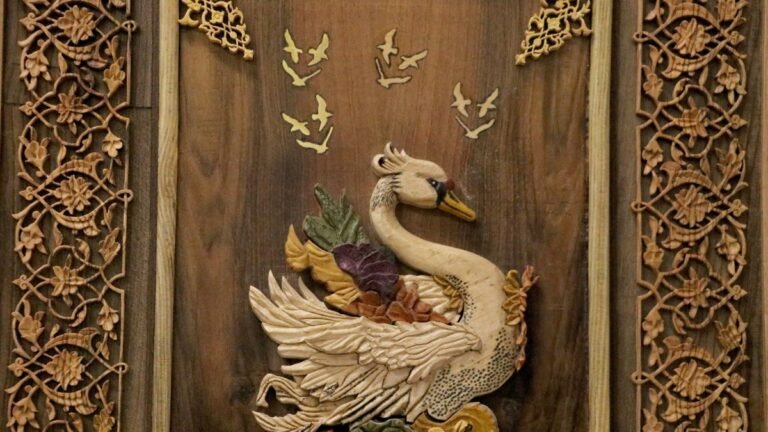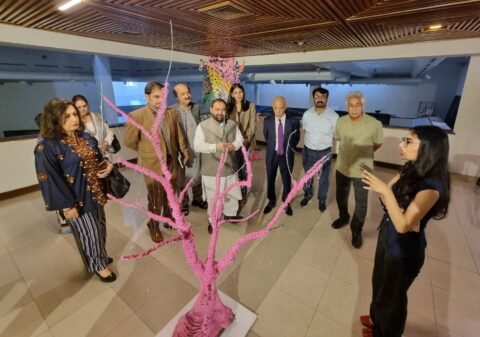In the quiet town of Türkiye’s Tekirdağ, 61-year-old Pertev Aslan has traded his chef’s knife for carving tools, breathing new life into centuries-old Turkish decorative arts. What began as a lockdown hobby during the pandemic has evolved into his full-time passion – and a mission to preserve and modernize artistic traditions of the past.
Aslan’s latest creation is a breathtaking three-dimensional wooden panel inspired by a 1583 frame design he discovered online. He blended this historic detail with the hatayi motif – a classical element in Turkish ornamentation – and sculpted the piece using exotic hardwoods from around the world. The result: a richly textured artwork featuring a swan, a symbol often found in Turkish baroque design.
Rediscovering forgotten art
Although Aslan spent over 40 years in the culinary world, he always held a quiet fascination for traditional Turkish arts – especially hatayi patterns, which appear in illuminated manuscripts, ceramics, textiles and book covers. To deepen his understanding, he studied under Sedefkar Enis Türk for six years, a master craftsman of inlay and design.

When the world slowed down during the COVID-19 pandemic, Aslan finally found the time to explore this lifelong interest. What began as a pastime soon became a calling. He eventually left the kitchen behind and opened two studios – one in Istanbul and one in Tekirdağ – dedicated to creating and teaching this intricate art form.
Aslan’s work stands out for its fusion of Turkish baroque and Islamic decorative elements. Baroque, originally a European architectural style that emerged in Italy, made its way to the Ottoman Empire centuries ago. The Ottomans reinterpreted their dramatic curves and ornate forms, creating a unique aesthetic – one that Aslan now continues through woodwork.
“In this piece, the central medallion is purely Turkish baroque,” says Aslan. “The frame is based on a 1583 design. It was originally a small sketch, but I expanded it into a full-scale piece. I don’t use any paint – just the natural colors and textures of hardwood. The density of exotic woods makes it easier to carve intricate forms.”
The finished panel took three months to complete. Entirely handcrafted and unpainted, it showcases meticulous technique and a deep respect for natural materials.

Sharing passion
Aslan’s wooden swan panel will be exhibited at the upcoming show “Aşkın On Bir Hali” (“Eleven Forms of Love”) in Ankara, part of a larger exhibition titled “Kökü Mazide Olan Atiyiz” (“The Future Rooted in the Past”). It’s a fitting theme for a man whose life has become a bridge between history and the present.
Beyond creating art, Aslan hopes to inspire others – especially young people – to explore Türkiye’s rich decorative arts heritage.
“I’m not just making art,” he says. “I’m continuing a story that began centuries ago. My hope is to pass it on.”






